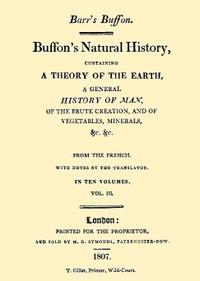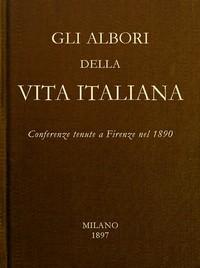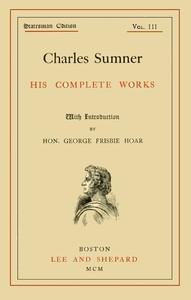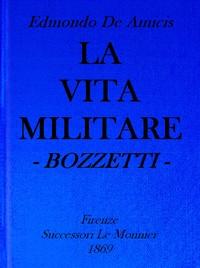|
|
Read this ebook for free! No credit card needed, absolutely nothing to pay.Words: 75259 in 13 pages
This is an ebook sharing website. You can read the uploaded ebooks for free here. No credit cards needed, nothing to pay. If you want to own a digital copy of the ebook, or want to read offline with your favorite ebook-reader, then you can choose to buy and download the ebook.

: Buffon's Natural History Volume 03 (of 10) Containing a Theory of the Earth a General History of Man of the Brute Creation and of Vegetables Minerals &c. &c. by Buffon Georges Louis Leclerc Comte De Barr James Smith Editor - Natural history@FreeBooksWed 07 Jun, 2023 PAGES ENGLISH NEEDLEWORK.--ITS PRACTICE IN PAST TIMES.--ITS PLACE AMONGST THE MINOR ARTS.--MR RUSKIN'S VIEWS AS TO NEEDLEWORK IN A MUSEUM.--LACK OF A HISTORY.--EXHIBITION OF SAMPLERS.-- RANGE OF THIS VOLUME 1-5 THE STITCHERY OF SAMPLERS, WITH A NOTE ON THEIR MATERIALS.--CUT AND DRAWN WORK.--BACK STITCH.--ALPHABET STITCHES.--DARNING STITCHES.--TENT AND CROSS STITCHES.-- VARIOUS STITCHES.--MATERIALS 161-171 INDEX 173 List of Colour Plates FIG. PAGE These observations of Fabricius have not given us a very clear explication of generation. Nearly at the same time as this anatomist was employed in these researches, towards the middle of the sixteenth century, the famous Aldrovandus also made observations on eggs; but as Harvey judiciously observes, he followed Aristotle much closer than experiment. The descriptions he gives of the chicken in the egg are not exact. Volcher Coiter, one of his scholars, succeeded much better in his enquiries; and Parisanus, a physician of Venice, having also laboured on this subject, they have each given a description of the chicken in the egg, which Harvey prefers to any other. See his Ornithology. Harvey asserts that man and every animal proceed from an egg; that the first produce of conception in viviparous animals is a kind of an egg, and that the only difference between viviparous and oviparous is, that the foetus of the first take their origin, acquire their growth, and arrive at their entire expansion in the matrix; whereas the foetus of oviparous animals begins to exist in the body of the mother, where they are merely as eggs, and it is only after they have quitted the body of the mother that they really become foetuses; and we must remark, says he, that in oviparous animals, some hold their eggs within themselves till they are perfect, as birds, serpents and oviparous quadrupeds; others lay their eggs before they are perfect, as fish, crustaceous, and testaceous animals. The eggs which these animals deposit are only the rudiments of real eggs, they afterwards acquire bulk and membranes, and attract nourishment from the matter which surrounds them. It is the same, adds he, with insects, for example, and caterpillars, which only seem imperfect eggs, which seek their nutriment, and at the end of a certain time arrive to the state of chrysalis, which is a perfect egg. There is another difference in oviparous animals: for fowls and other birds have eggs of different sizes, whereas fish, frogs, &c. lay them before they are perfect, have them all of the same size; he indeed observes, that in pigeons, who only lay two eggs, all the small eggs which remain in the ovarium are of the same size, and it is only the foremost two which are bigger than the rest. It is the same, he says, in cartilaginous fish, as in the thornback, who have only two eggs which increase and come to maturity, while those which remain in the ovarium are, like those in fowls, of different sizes. He afterwards makes us an anatomical exposition of the parts necessary to generation, and observes, that in all birds the situation of the anus and vulra are contrary to the situation of those parts in other animals; the anus being placed before and the vulra behind; and with respect to the cock, and all small birds, that they generate by external friction, having in fact no intermission nor real copulation; with male ducks, geese, and ostriches, it is evidently otherwise. Most of these articles are taken from Aristotle. Hens produce eggs without the cock, but in a very small number, and these eggs, although perfect, are unfruitful: he does not agree with the opinion of country people, that two or three days cohabitation with the cock is sufficient to impregnate all the eggs a hen will lay within the year, but admits that he separated a hen from a cock for the space of twenty days, and that all the eggs she laid during that space were fecundated. While the egg is fastened to the ovarium, it derives its nutriment from the vessel of the common pellicle. But as soon as it is loosened from it, it derives the white liquor which fills the passages in which it descends, and the whole, even to the shell, is formed by this mode. Free books android app tbrJar TBR JAR Read Free books online gutenberg More posts by @FreeBooks
: Gli albori della vita Italiana Conferenze tenute a Firenze nel 1890 by Various - Italy Civilization; Italy History 476-1492; Italian literature To 1400 History and criticism IT Storia@FreeBooksWed 07 Jun, 2023

: Charles Sumner: his complete works volume 03 (of 20) by Sumner Charles - Slavery United States; Speeches addresses etc. American@FreeBooksWed 07 Jun, 2023
|
Terms of Use Stock Market News! © gutenberg.org.in2025 All Rights reserved.






